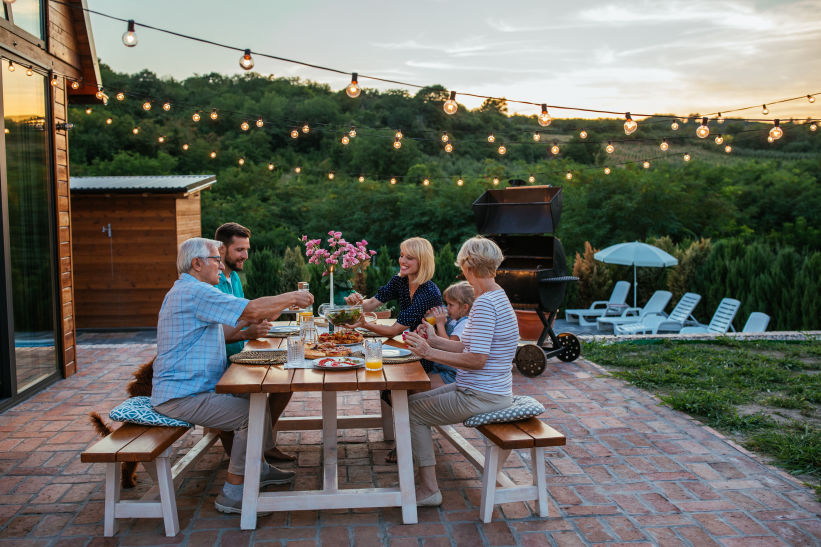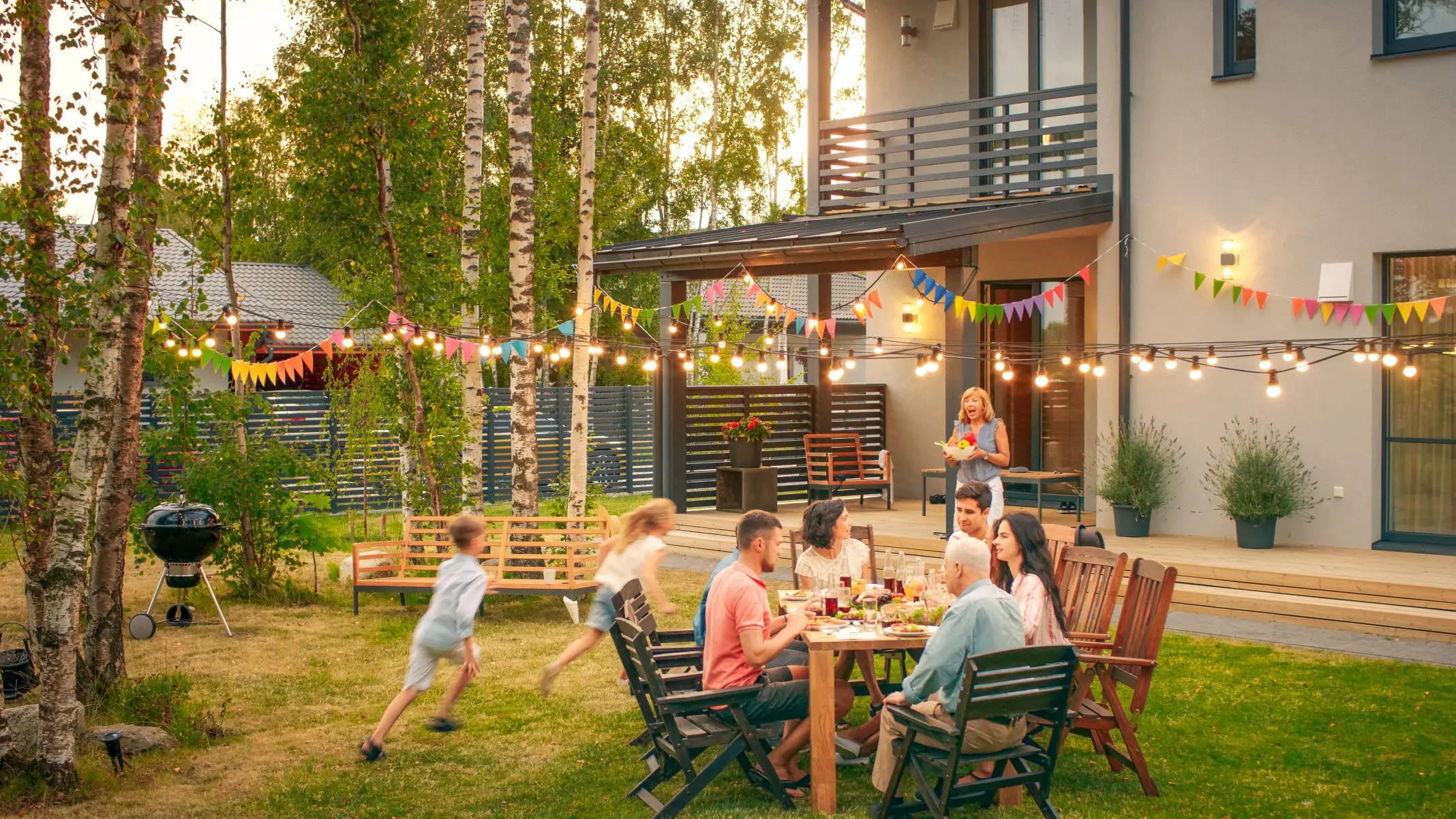


Imagine keeping an extra $200,000 to $400,000 in your pocket each year—not through additional work or side hustles, but simply by choosing to practice in Oklahoma City rather than a coastal metropolitan area. With your annual compensation of $750,000+, you'll experience a level of financial freedom that would require earning well over $1.4 million in San Francisco or $1.1 million in Los Angeles to match.
The cost of living in San Francisco is 96.5% higher than in Oklahoma City, while Los Angeles is 48.2% more expensive. This isn’t just about numbers—it’s about the profound difference in lifestyle when your income stretches nearly twice as far, allowing you to build wealth rapidly while living exceptionally well.
Oklahoma City’s housing market redefines financial freedom. With median home prices around $320,395 and luxury estates rarely exceeding $800,000, you can own what would cost $3–5 million on the coasts. Even a $700,000 home would consume less than 10% of your gross monthly income—versus 25–35% for physicians in Los Angeles or San Francisco.
Average monthly rent hovers near $1,040, but with favorable mortgage terms and equity growth, homeownership makes powerful financial sense at your income level.
Everyday expenses in Oklahoma City stretch your income further, creating a compounding wealth effect. Groceries cost 5% less than average, utilities 3% less, and fine dining or entertainment are often half the price of comparable experiences in larger metros. These “small” differences add up to tens of thousands in annual savings, fueling faster investment growth and greater lifestyle flexibility.
Oklahoma’s tax structure favors high earners with one of the nation’s lowest top marginal rates—4.75% (dropping to 4.5% in 2026). You’ll save approximately $45,000 annually in state taxes compared to California. No city or local income tax further enhances your net take-home pay. Recent reforms even include triggers for future reductions, with policymakers actively exploring a path toward zero income tax.
Practicing in Oklahoma City creates an extraordinary wealth-building multiplier. With housing and living costs consuming half of what they would in coastal markets, you can save or invest an additional $300,000–$400,000 annually. Over 20 years, this translates to millions in extra net worth—enough to fund college educations, expand real estate holdings, or retire a decade earlier than peers in high-cost cities.
Oklahoma City ranks among America’s most livable cities, but for a physician earning $750,000+, it may be the single best value proposition in the nation. Here, your income doesn’t just sustain comfort—it creates lasting prosperity. You’ll afford a beautiful home, private education, travel, country club memberships, and aggressive retirement savings—all while maintaining a generous margin for life’s spontaneous luxuries.
In Oklahoma City, you’re not choosing between financial success and personal fulfillment—you’re achieving both, effortlessly and simultaneously.
Picture yourself driving through the tree-lined streets of Nichols Hills or the gated entrances of Gaillardia, past estates with manicured lawns and tennis courts—knowing these neighborhoods, Oklahoma City’s most exclusive, are well within reach on your $750,000+ annual income. What would cost $5–10 million in Beverly Hills or Atherton can be yours here for $1–2 million. Even a $1.5 million estate requires only about 12% of your monthly gross income, compared to the 30–40% most physicians spend on modest homes in California. This isn’t about settling—it’s about multiplying your lifestyle value while building equity in a market with steady, sustainable appreciation.
Founded in 1929, Nichols Hills is Oklahoma’s most historic and prestigious enclave—home to governors, judges, energy executives, and medical leaders. With an average home price around $1.28 million (and options between $500,000 and $2 million), the community combines architectural elegance with exclusive amenities. As its own municipality, Nichols Hills provides dedicated police, fire, and public works, ensuring exceptional security and privacy. Commutes to Oklahoma Pain Management average under 20 minutes, and everyday errands are a breeze with Whole Foods and Trader Joe’s minutes away.
At Gaillardia, luxury and leisure intertwine in a 600-acre master-planned community that feels like a private resort. Homes, priced between $750,000 and $3 million, offer architectural sophistication on lots up to two acres. Residents enjoy membership to the Gaillardia Country Club, featuring a Tom Kite-designed golf course, 55,000-square-foot clubhouse, Olympic-sized pool, and fine dining venues. Gated 24-hour security and manicured landscaping ensure peace, privacy, and exclusivity—all within 20 minutes of downtown and Will Rogers Airport.
For physicians with children, Deer Creek represents the perfect blend of luxury and education. Communities like Twin Silos, Valencia, and Council Ridge feature new construction homes priced from $400,000 to $800,000 within Oklahoma’s most sought-after school district. Deer Creek High School boasts a 96% graduation rate, National Blue Ribbon status, and average ACT scores of 26. Family-focused neighborhoods include resort-style pools, parks, sports fields, and walking trails—all easily accessible via the Kilpatrick Turnpike.
Just north of the city, Edmond balances small-town charm with urban sophistication—twice named to CNBC’s “10 Perfect Suburbs”. Home prices between $300,000 and $700,000 deliver incredible value, and commutes to Oklahoma Pain Management average 20–25 minutes. Edmond’s schools rank among the state’s best, while Arcadia Lake and a thriving arts scene make it ideal for families seeking outdoor recreation and culture. New communities like Knox Farm and Shadow Ridge feature modern builds, while established neighborhoods near downtown offer mature trees and walkable streets.
For newcomers preferring flexibility, Oklahoma City’s rental market offers luxury at a fraction of the coastal price. With average rent around $1,040, you can secure a premium apartment or executive home for $2,000–3,000 monthly—less than the cost of a San Francisco studio. Many physicians rent for a few months while exploring neighborhoods, commute options, and schools before buying. Upscale communities near Quail Springs and along the Northwest Expressway provide resort-style amenities including pools, fitness centers, and concierge services.
Local lenders compete aggressively for physician clients, offering specialized mortgage programs with 0% down, no PMI, and highly competitive rates. The buying process here is refreshingly fast—offers typically close within 30–45 days. Work with a realtor experienced in physician relocations to navigate Oklahoma City’s unique luxury market. Each month spent renting elsewhere represents tens of thousands in lost equity potential, making property ownership here not only a lifestyle decision—but a powerful wealth-building strategy.
In Oklahoma City, your income doesn’t just buy you a house—it buys you an estate, a community, and a financial foundation that would be unattainable in traditional metropolitan markets. Whether you prefer the historic prestige of Nichols Hills, the resort elegance of Gaillardia, the family focus of Deer Creek, or the suburban sophistication of Edmond, luxury living in Oklahoma City isn’t about compromise—it’s about getting everything you’ve earned, at a fraction of the cost.



As you consider Oklahoma City for your medical practice and family life, you’ll find a metropolitan area where safety and professional excellence intersect seamlessly. Physicians and healthcare professionals consistently choose neighborhoods offering both security and superior quality of life—a contrast to the daily safety concerns that accompany larger urban centers. Here, established communities provide peace of mind so you can focus fully on your work and family.
The affluent enclave of Nichols Hills stands as the metro’s gold standard for safety, with some of the lowest crime rates in the state and its own dedicated police force. Driving through its tree-lined boulevards, you’ll notice subtle but effective security measures—limited access points, bright street lighting, and visible patrols—creating an environment where families walk, children bike, and neighbors connect freely.
The Oklahoma Health Center District—home to OU Health, INTEGRIS Baptist, and other major medical institutions—functions as a city within a city, equipped with state-of-the-art security systems. 24/7 armed officers, controlled access points, extensive surveillance, and secure parking ensure your workplace feels safe and controlled.
The Oklahoma City Police Department, with 1,169 sworn officers, maintains specialized units including aerial patrols with FLIR technology, ensuring rapid response across the metro. Average emergency response times are under 9 minutes, often faster within the medical district.
Living in Oklahoma City means immediate access to world-class emergency medicine. OU Health’s Level I Trauma Center—the only one in Oklahoma—maintains trauma surgeons, neurosurgeons, and critical care staff on-site 24/7. This gold-standard readiness ensures the “golden hour” is maximized for every emergency.
INTEGRIS Baptist Medical Center’s recent Level II verification and a network of Level III centers create a metro-wide trauma web where advanced care is always within 15 minutes. This infrastructure rivals or surpasses larger cities—without the delays caused by congestion.
Most Oklahoma City physicians live in suburban enclaves like Edmond, Deer Creek, and Quail Creek—areas where safety and community engagement create a sense of everyday peace. Edmond’s violent crime rate of just 1.2 per 1,000 residents places it among the safest in the nation. Evening jogs, school commutes, and community events all unfold in environments defined by security and connection.
These physician-dense neighborhoods benefit from strong “collective efficacy”—neighbors who know each other, active HOAs, youth programs, and civic engagement that naturally reinforces safety and stability.
While tornadoes are part of Oklahoma’s identity, the city’s infrastructure reflects decades of preparedness. The National Weather Center provides 13-minute average tornado warnings—the nation’s best. With 171 sirens, reinforced construction, and abundant safe rooms, Oklahoma City turns potential risk into manageable readiness.
Medical facilities and modern homes in physician neighborhoods feature storm shelters, backup generators, and EF-rated reinforcements. Community response programs and CERT-trained teams further strengthen resilience during severe weather events.
Oklahoma City’s layout simplifies safe navigation. The medical district’s proximity to major highways ensures easy access to clinics and hospitals while avoiding congested areas. Well-lit corridors, strong law enforcement presence, and professional security staffing make evening events in Bricktown, Nichols Hills Plaza, and Downtown secure and stress-free.
In Oklahoma City, safety isn’t a privilege—it’s a way of life. Between well-secured professional environments, physician-preferred neighborhoods, and robust emergency infrastructure, you’ll experience a city where peace of mind is standard. Here, you can devote your energy to practicing medicine and building family life, confident that your surroundings support both with quiet efficiency and reliability.
